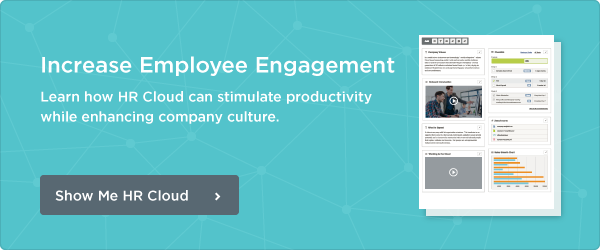
 Try
Out
Our
Try
Out
OurEmployee Engagement Software For Free

If you didn’t make it to HR Tech this year, here’s what you missed.
Size Matters
Each year, HR Tech just gets bigger. There are more vendors, more attendees, and more media coverage than the year before. There was an excitement around emerging technology that is still in the beta stage (cool start-up section on the expo floor!) and equal interest in existing technologies that may have been upgraded or changed in some way to help make your HR life a bit more simpler. Think “next gen” HR.
However, with the wide selection, there are many choices—sometimes too many choices.
Your challenge?
As the HR technology industry continues to expand, improve, and introduce new products, it is increasingly important for HR professionals to gain a better understanding of technology and how best to apply it to your organization. As you work with vendors, search out those that not only provide a sound technology solution but partner with you through education, helping you to understand the why behind the technology, why it works the way it does, and how it can tackle HR’s toughest issues.
Smart Data
In the opening keynote, “Making the Right Choices in the Second Machine Age,” Andrew McAfee from MIT reminded us that data based decisions regularly surpass “gut based” decisions, and that if we intend to stay ahead of the curve and lead in the marketplace, we must rely more on data. This also means we must evolve as technology evolves.
HR is taking part in this evolution by using social recruiting tools and smart onboarding solutions, for example. We are more educated about the Cloud and understand the ease of storing and sharing information. However, we still have questions about how the next generation of technology will keep up with the vast amounts of data that continually has HR departments bursting at the seams.
For example, the software your department began using in 2009 may not be ready for 2015. Does it allow for accurate reporting across platforms? Is configuration an option? If you invest in new technology, how will that streamline your workday, and what will it mean for your employees?
The Next Generation
Curious about these same questions and how onboarding software is keeping up, I checked in with the HR Cloud team and got some answers:
What’s new about the HR Cloud platform?
We've introduced a new design, the focus being on actions on that can be taken on grids. Data can be easily grouped, filtered, or organized in columns. These filtered and custom views can be saved so that the next time it’s needed it’s at your fingertips.
What’s the benefit of the new interface design?
The new design is more intuitive and has more dynamic reporting capabilities. The ease of use sets HR Cloud apart from others.
How does Onboard instill company culture?
The Onboard portal allows for additional branding and the ability to configure your pages to reflect the overall culture of your organization. Widgets containing videos, text, images, links, websites, lists, and checklists can be organized to give the most powerful overview of company culture. This connects your new hires more quickly, easing that transition time.
Tell me more about Core HR. How is it different than other HRIS solutions?
We've spent quite a bit of time expanding the reporting functions for the HR admin users. We use reporting on the main grid of the system. Any field added to the employee's profile is available to be included on the grids and filters can be applied to the grids to show (in real time), creating exportable views.
What kind of reports can you create in Core HR?
You can report on any field that is part of the employee's profile. The system comes with a number of staple reports: headcount, salary, and position history, as well as turnover reports. If you’re looking for other details, you’ll find these on the main “people grid.”
How does Core HR link to the Onboard solution?
The employees are part of both systems, as the information feeds directly from Core HR to Onboard. This allows the employee to come back in and check out the Onboard portal to access links or documents. Onboard also takes into account the employee's network (their managers and subordinates) based on the organizational structure set forward in the Core HR system.
As HR technology evolves, so must we. As we move forward into 2015 and beyond, HR professionals need to stay current with technology changes, how data is being used and stored, and how we can best apply this knowledge to the work we perform. Based on this knowledge, we as HR professionals need to be the drivers of change in our organizations.
Keep Reading
Benefits of Having a Company Intranet
Company intranets have been a part of corporate life since the mid-'90s. But in the last
Top 8 Workvivo Alternatives for 2024
Meta recently announced that it is shutting down its employee communications tool








